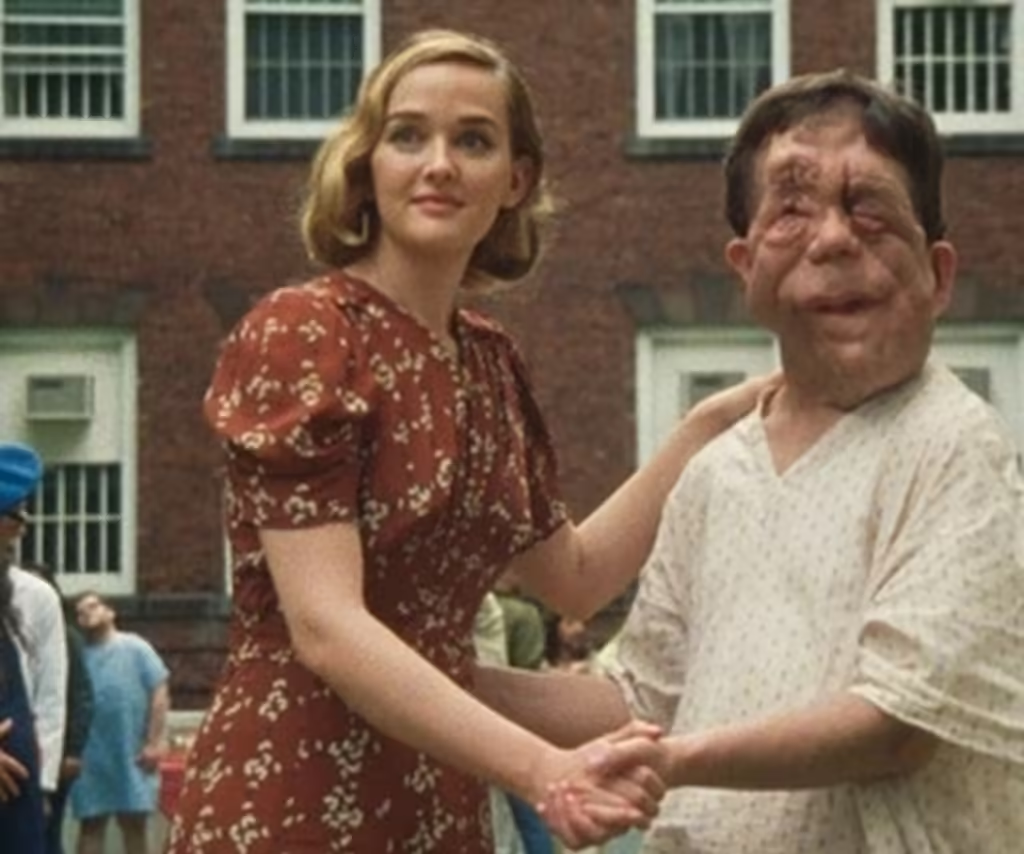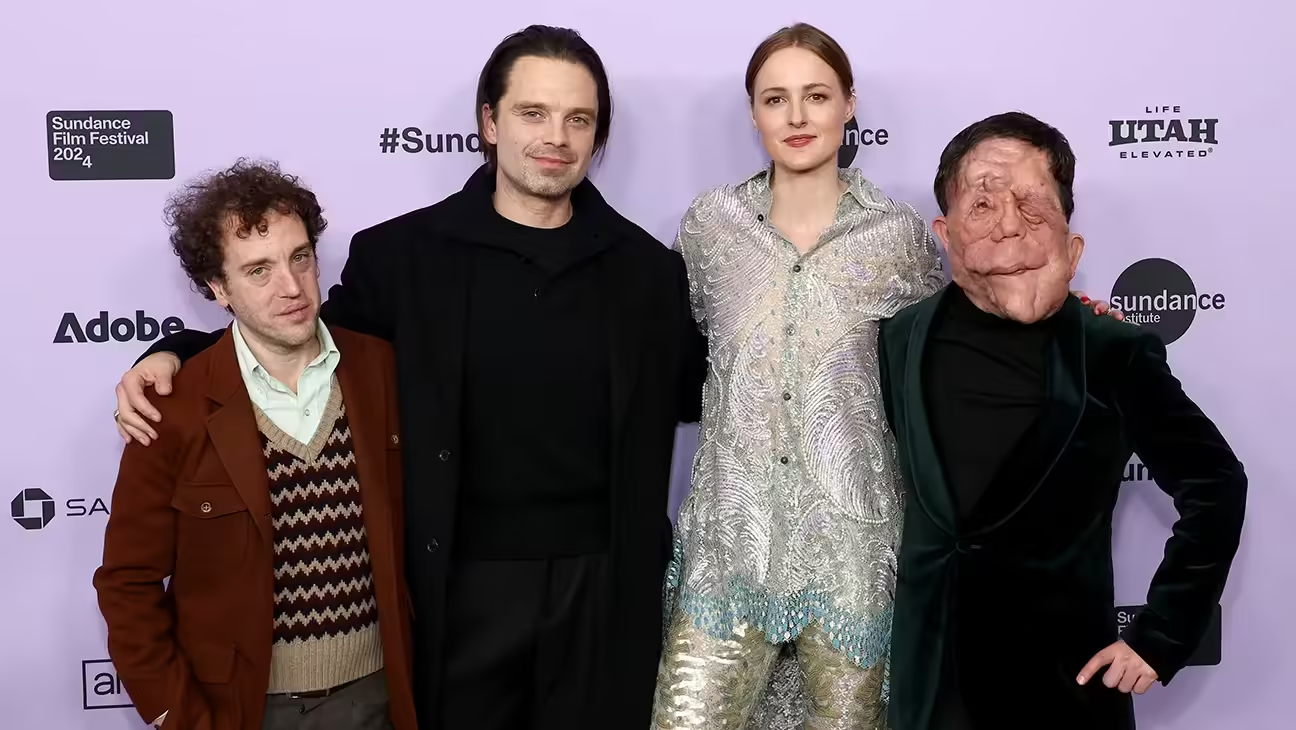Introduction: Moving Away from Conventionality
Aaron Schimberg’s A Different Man is yet another film that does not comfortably fit into the block of movies churned out by Hollywood as representative of its custom and tradition. Amidst an industry mainly driven by stories rife with clear moral lessons and tidy resolutions, A Different Man dares to be different.
Schimberg, known for his unconventional approach to filmmaking, offers viewers something more nuanced and open to interpretation. He openly rejects the idea of turning his film into a moral tale or a fable, allowing for a fresh, human-centered narrative.
As Schimberg said in a recent interview, “It’s not a fable or a moral tale.” This speaks to how the movie views storytelling, which, in itself, really challenges an audience more than being led somewhere by hand. So, the question would be, what does this do for viewers. And in what fashion is the choice to do that in a good way? Let’s take a closer look.
What Sets a Different Man Apart (Aaron)
At its core, A Different Man is a character-driven film emphasizing human complexity. The main character of the movie, who’s fighting for a cure for facial disfigurement. Finds himself in the middle of an emotional depth and psychological exploration journey. Instead of sticking to explicit right-and-wrong scenarios or lessons in life.
The movie encourages the audience to connect with the character’s personal experience. Without trying to render a “moral” from it by the end.
This is quite different from the classic “hero’s journey.” Or a story where a character goes through some kind of trial, learns something meaningful and becomes a better person. There’s nothing wrong with those stories, of course. But Aaron Schimberg’s decision to throw these kinds of tropes aside gives A Different Man a freshness in modern filmmaking.
The film allows ambiguity and complexity to be at center stage. For keeping away from a stiff moral structure or a story, in the mold of a fable. The story feels more real because its basis is the unpredictability of human life.

Testing the View of the Audience (Aaron)
The other beautiful thing about Schimberg’s direction is how he trusts his audience. In A Different Man, Schimberg doesn’t feed the viewers through spoon-feeding, nor does he wrap everything into a neat little bow. This at times presents a better difficulty. But in turn, makes the film more fulfilling. As a viewer, you are pushed to reflect on the characters, and their choices. And situations without leading you to what you should be thinking.
Thus, the refusal of fables in Schimberg is not only a narrational move. But also a point in the area of the ability to say something moralistic. Instead of making the lesson harder. A Different Man challenges the viewer to reflect and talk more profoundly. Such a movie lingers after the end for many reasons. There is always some gap to fill and make your own meaning.
This is a very bold move at a time. When audiences are growing accustomed to films that present things in black and white with direct emotional payoffs. The art of Schimberg is respectful to the audience in trusting them to handle complex emotions. And layered characters without needing a guide to show them the way.
Why Fables Should Be Avoided in Modern Filmmaking
Fables and tales of morality exist in the world of storytelling. But they rather make the human condition monochromatic and reductional. They take complex scenarios and redefine them into black-and-white lessons. Often leaving reality outside the context. Real life does not always teach a lesson. So human behavior cannot be drawn into those defined lines.
The decision by Schimberg to move away from those structures is especially relevant today. Because audiences want more authentic, layered stories. With more content available on streaming sites than one could consume in a lifetime. Filmmakers need to establish their own niches in that landscape. One way to do this is by offering types of stories that are different in substance rather than style.
By avoiding this fairy-tale attitude, A Different Man meets this demand for reality. It is not a film about having all the solutions. It is more of a piece of life with lots of messiness and contradictions, leaving judgment to the viewers’ discretion.
No Heroes, Just People: The Story of the Protagonist
She is a person defined by physical differences. But Schimberg again avoids ratcheting up a simplistic “overcoming adversity” story. The film goes inside the inner turmoil and struggles. Emotional conflicts make this character impossibly human.
This is why A Different Man refuses the fable-like style of narration. For most traditional tales, the problem of the body or soul discovers its relation to something more universal in the narrative of a life. Schimberg, however, cannot take this path and let the character live with himself instead of being reduced to a symbol.
It appears, in consequence, like the most intimate, even like the most conversational story, and therefore like the most truthful one.
Such is the highly layered, complex journey of the protagonist. All that is realistic in human growth cannot go without twists and turns. There is no triumphing, feel-good ending. But that does not make the story any less moving. Indeed, it may be all the more effective because of human imperfection and the chaos of life.

Conclusion: Beyond Fables
A Different Man by Aaron Schimberg is a great example of how storytelling could take on something. Other than the frustratingly obvious trappings of fables and moral tales. Here, it looks to be ambiguous and complex. In an attempt to challenge the viewer in terms of character and themes.
Through the rejection of the moralistic approach, Schimberg opens up space for a richer and more authentic experience of the narrative. A Different Man is not only a move away from storytelling tradition. But also a bold statement on the power of stories that do not hark back to easy lessons. But give us something more valuable—that is, the honest portrayal of human life in all its complexity.
